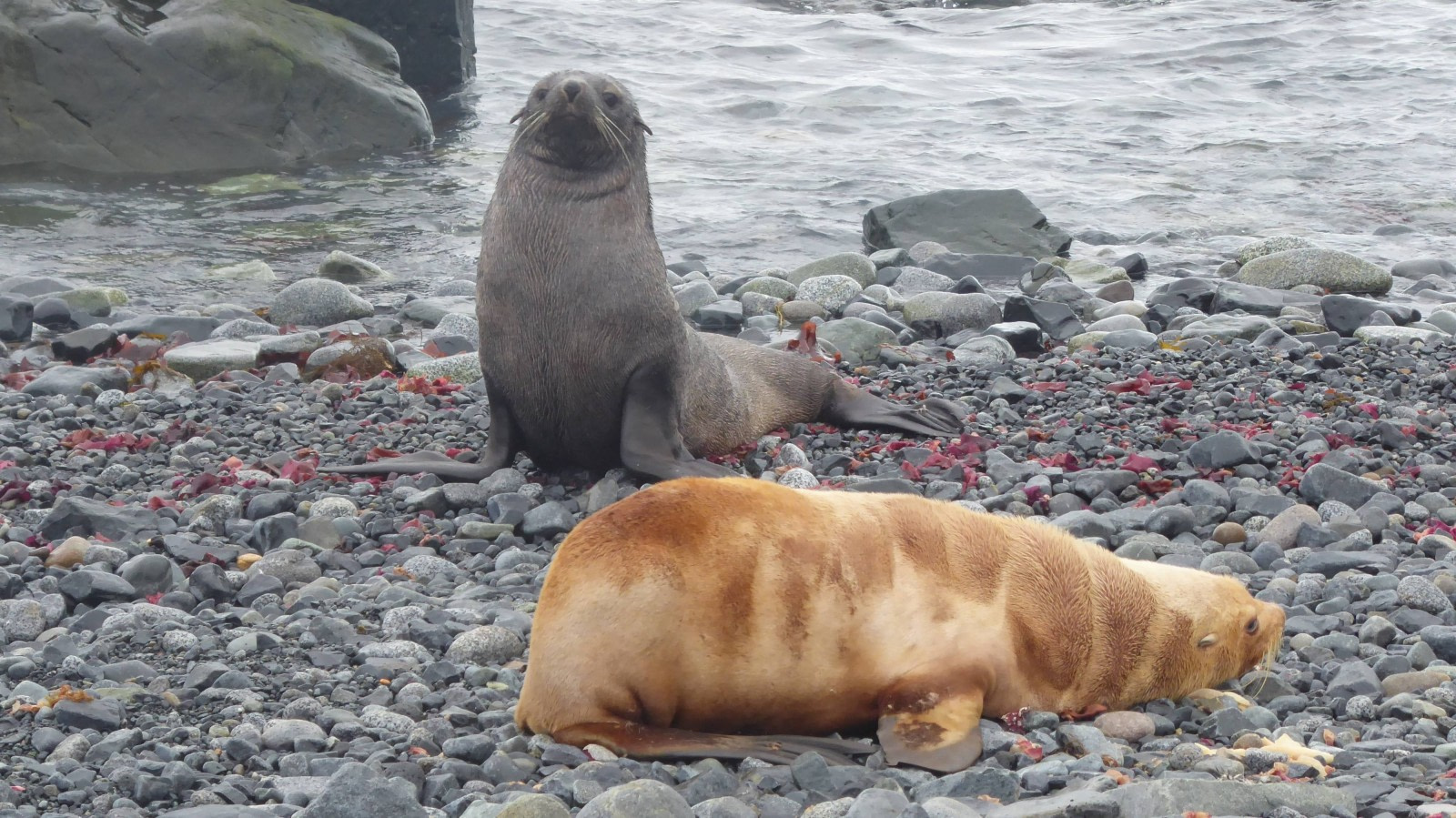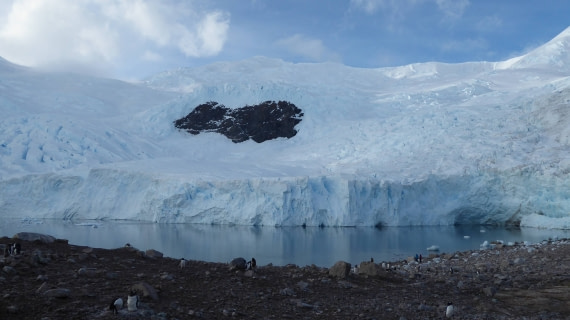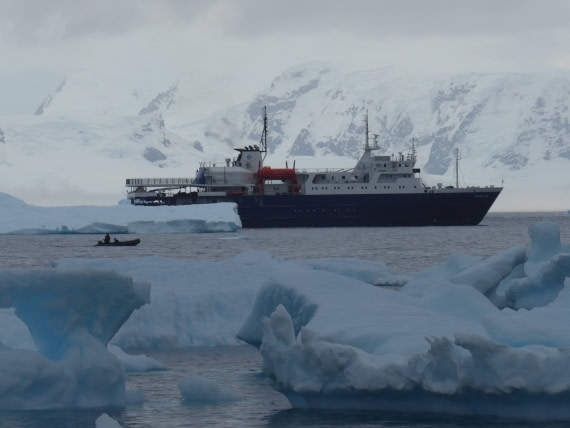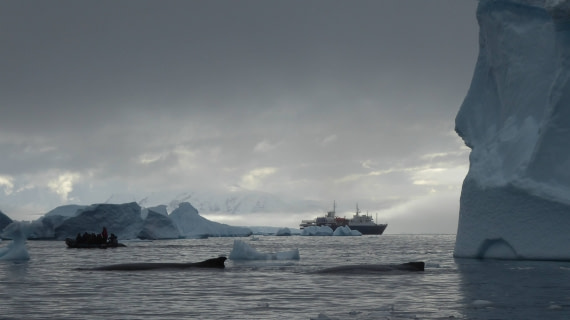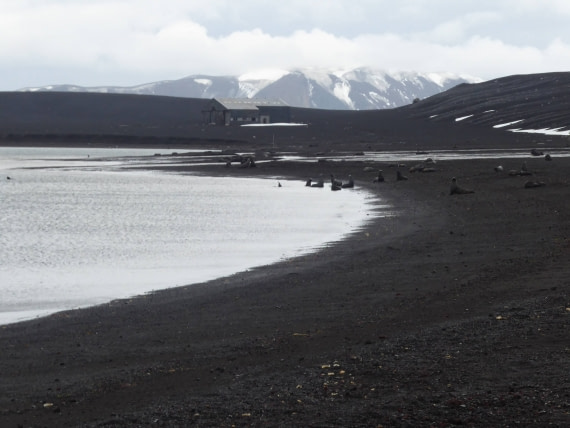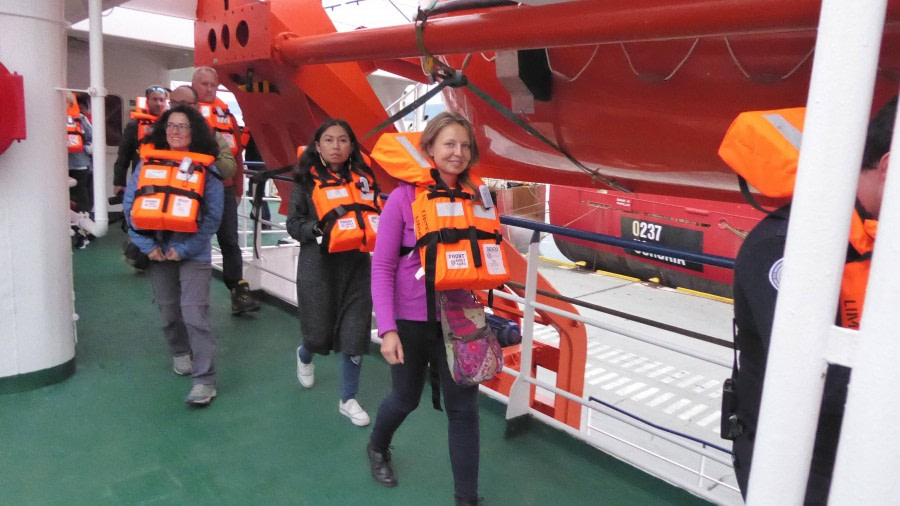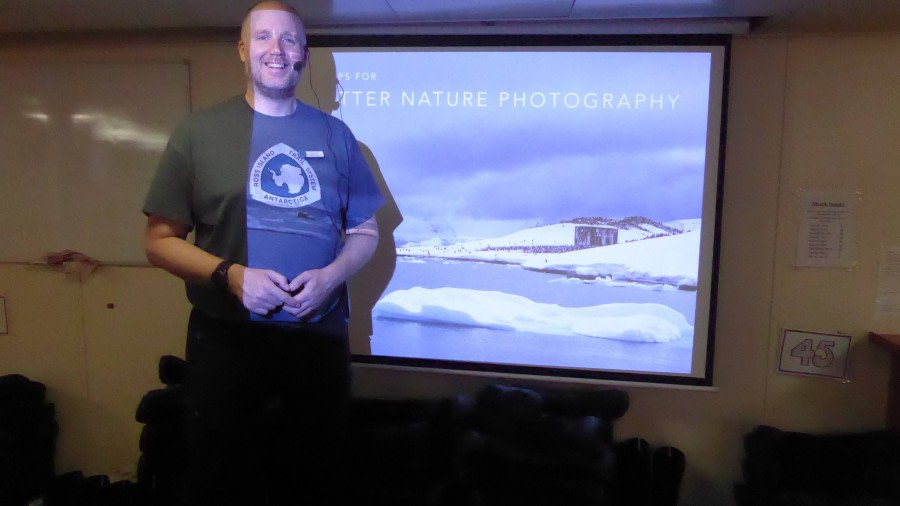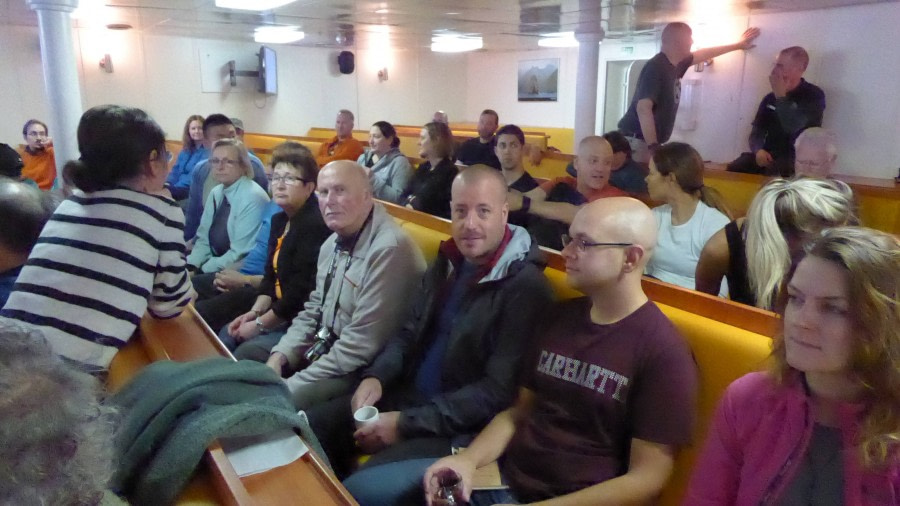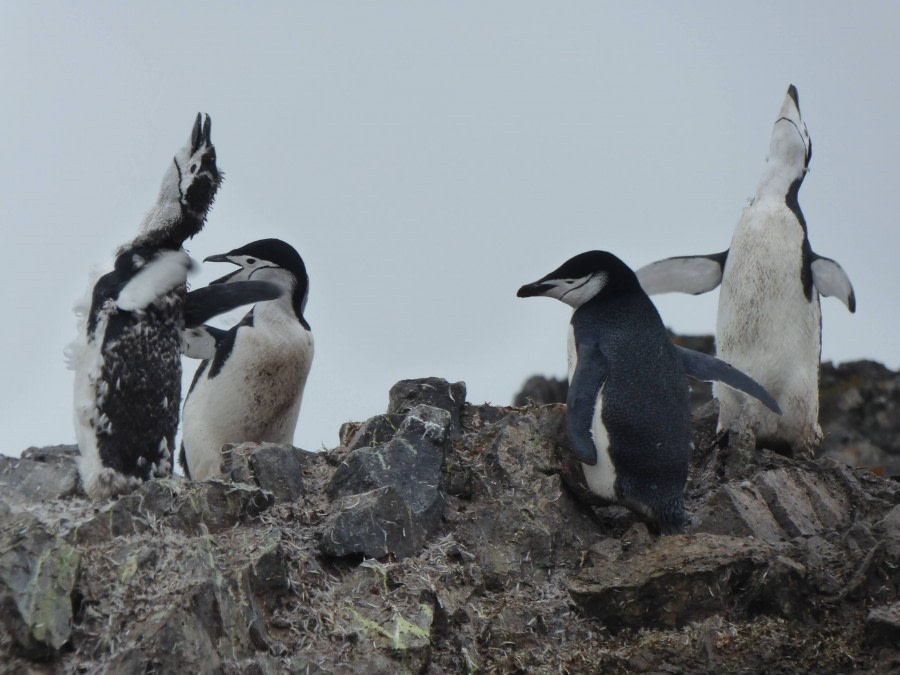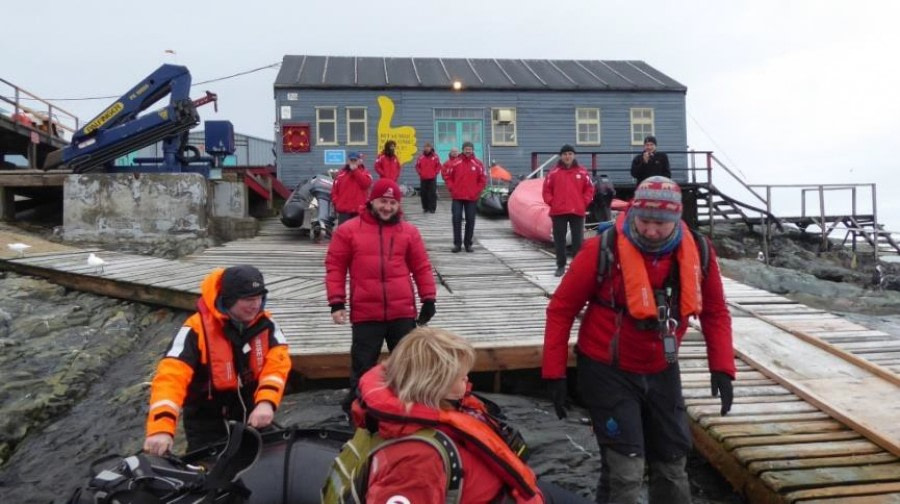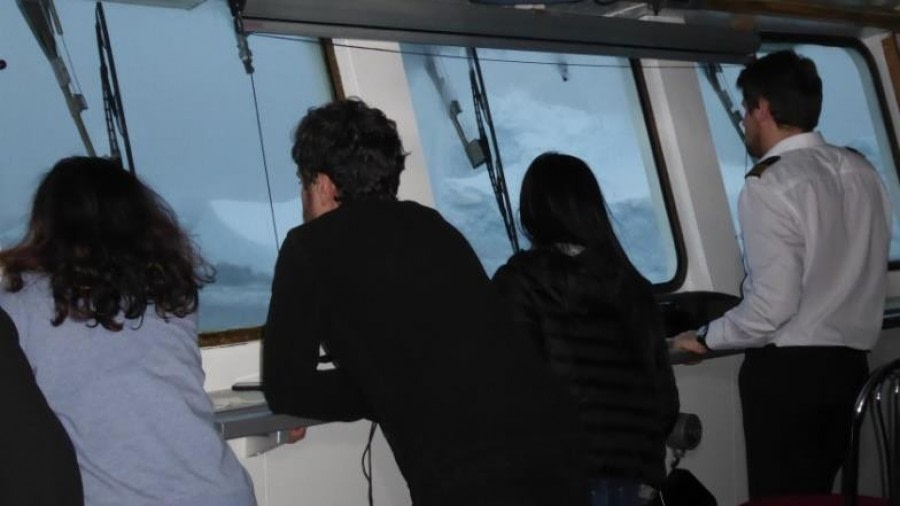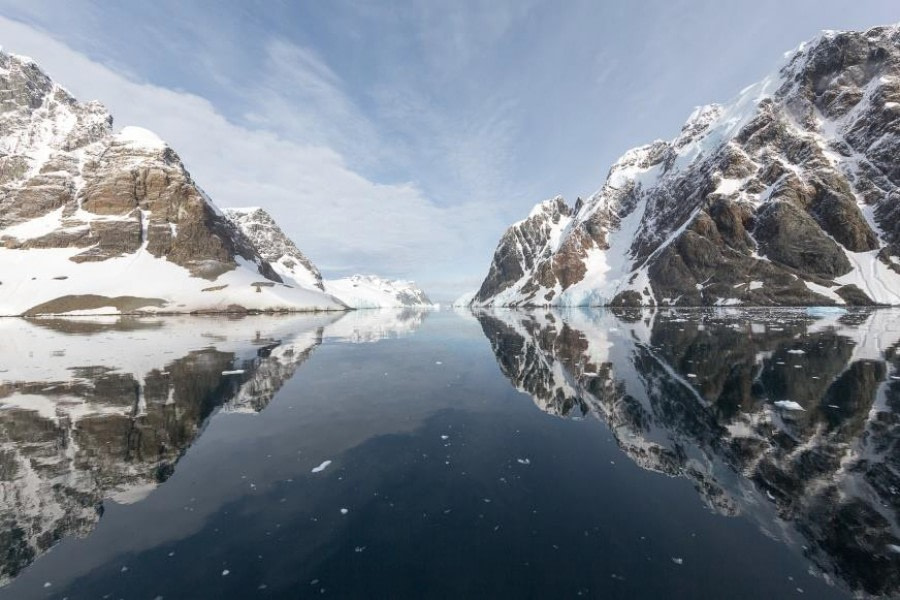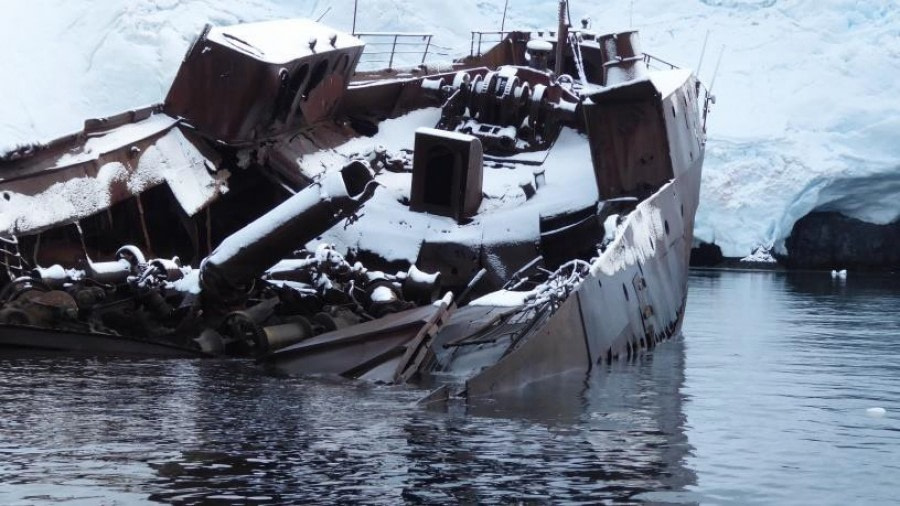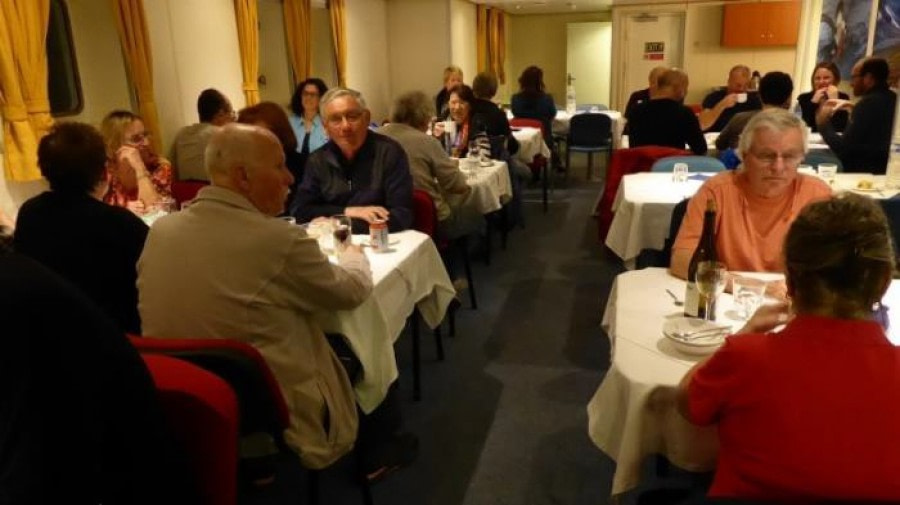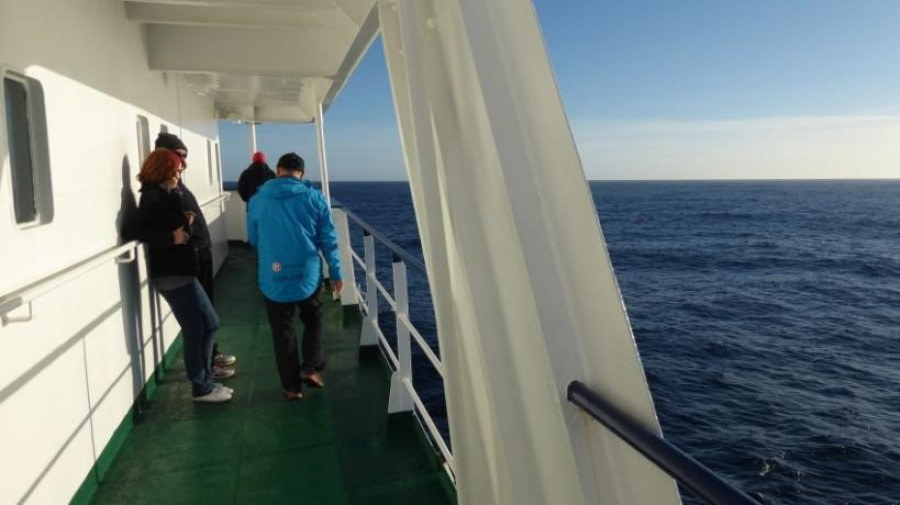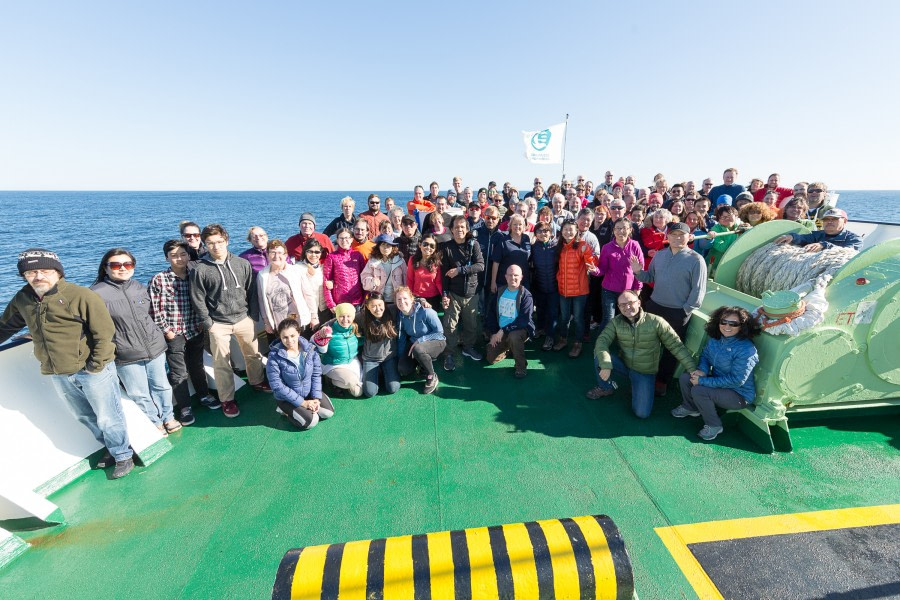| Date: | 17.03.2017 |
| Position: | 54°49’S / 068°18’W |
| Wind: | Calm |
| Weather: | Mainly sunny |
| Air Temperature: | +15 |
After a sunny day spent looking around Ushuaia, we boarded Ortelius between 16.00 and 17.00 and set about exploring our new floating home. There was time to unpack our bags and find our way to the bar (the location of the all-important coffee machine) as well as visit the outer decks before being summoned to a mandatory meeting in the Lecture room at 17.15. Here we were welcomed by Hotel Manager Dejan (DJ), who gave us a virtual tour of the ship and filled us in on how shipboard life on the Southern Ocean works. This information was followed with a Ship Safety Briefing and instructions on the lifeboat drill to come. When the seven- short-and-one-long-blast signal was heard, we put on our large orange life-jackets and made our way to the Muster Station (aka: bar) on Deck 6. A roll call was taken and we followed Sava and DJ respectively out to lifeboats 1 and 2. We are hopeful that we will not need to do this again in the next 10 days… Most of us gathered out on deck to witness our departure from Ushuaia at around 18.15, shortly after the drill. As we headed into the Beagle Channel there was a sense of excitement and anticipation as to what lay ahead. Antarctica here we come! At 19.15 we met again in the bar, this time for a welcome cocktail with Captain Mika, the most important man on the ship. He spoke a few words and explained that we are welcome on the bridge during daylight hours, which is a great viewing platform for bird-watching and also the place to find out from officers on watch what life is like at sea. Expedition leader Rolf then welcomed us and told us a little about the coming voyage over a toast in sparkling wine and canapés; he has a large team of expedition guides working with him to make our trip a success, and they introduced themselves and their roles on board. There is a diving and kayaking programme running this trip, so there will be plenty going on. By now it was nearly dinner time and there was a real buzz in the dining room, as we got to know each other and talked about our expectations of Antarctica. The bar was quiet after dinner – most people were tired from their long journey and ready for bed. Now we are underway and will wake up tomorrow at sea!
